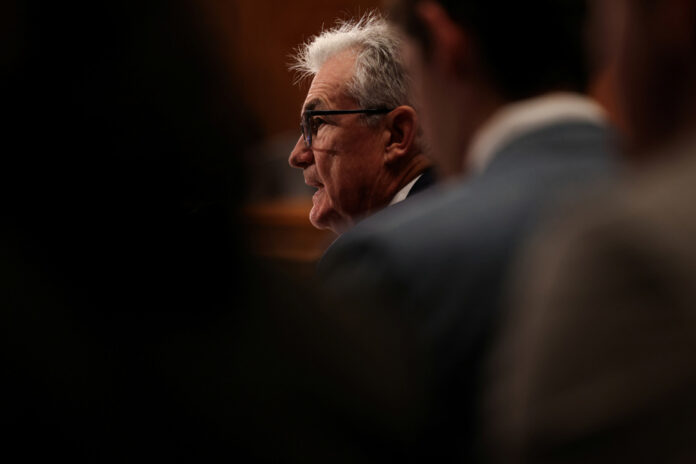(Washington) Federal Reserve (Fed) Chairman Jerome Powell left the door open for two more consecutive rate hikes from the U.S. central bank in the coming months, at a conference of central bankers in Sintra, Washington. Portugal Wednesday.
The Fed’s latest meeting ended with a pause, after a series of ten consecutive hikes to take its main rate to a range between 5% and 5.25%, with the aim of giving its committee more time. (FOMC) to see the effects of the hikes already made on inflation, which remains above the 2% target.
Although declining, inflation in the United States remained at 4% in May, according to the CPI index. That calculated according to the PCE index, favored by the Fed, should be known on Friday.
However “we are far from a return to normal”, insisted the Fed Chairman, “we do not expect a return of underlying inflation (i.e. excluding the price of oil). food and energy, Editor’s note) below 2% this year or next year, rather for the next one”.
During the last meeting in mid-June, the majority of FOMC members felt that rates should be hiked twice more, Powell said.
“We think there will be further tightening” of monetary policy, the Fed Chairman stressed, noting that it has not been decided whether these hikes will be realized in the next two meetings or more smoothed in the future. time.
“I do not rule out the possibility of an increase in two successive meetings”, however added Jerome Powell.
But the effects of U.S. monetary policy will take time to kick in, he said, before inflation returns to and stays at the 2% target.
“Monetary policy hasn’t been tight enough for long enough,” Powell said.
While inflation is indeed on the way to a return to normal, the deceleration in price increases is taking place at a much slower pace than expected, in a context where the labor market and growth remain also stronger than expected.
At the start of the year, the Fed announced that it expected a slight recession during the second half of the year, but Jerome Powell does not rule out the fact that the American economy could avoid it.
“It’s not the most obvious possibility, but it’s still a possibility,” he said.















